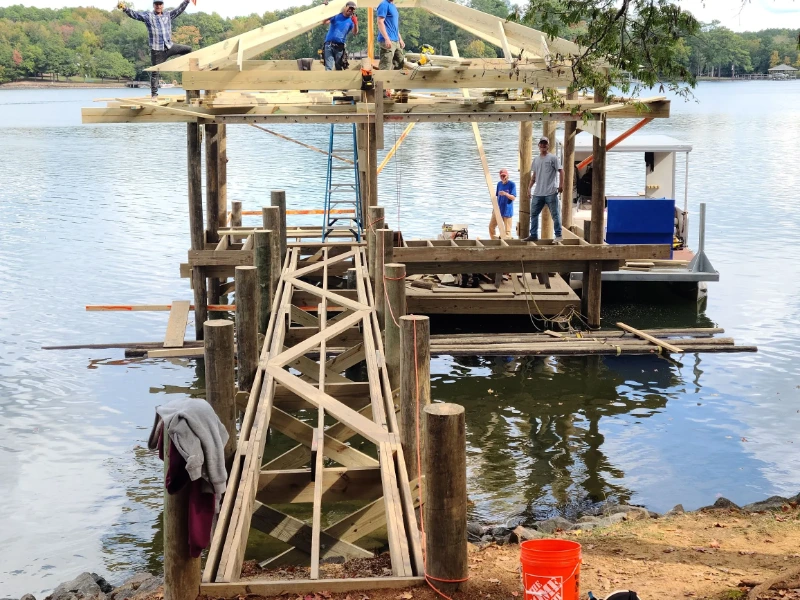Common Concerns That Result In Pricey Dock Repairs
Just How to Address Common Dock Repair Work Issues for Safe Water Tasks

Identifying Common Dock Issues
Identifying common dock issues is vital for maintaining the capability and safety and security of your beachfront residential property. Normal assessments can help reveal problems prior to they end up being serious, ensuring both the long life of the dock and the safety of those who use it.
Another common issue is the destruction of flotation gadgets. These devices are necessary for maintaining the dock buoyant, and any damage or leaks can trigger the dock to checklist or sink. On a regular basis looking for leaks or waterlogged drifts can preempt much more substantial problems.
In addition, algae and barnacle accumulation on the dock's surface can develop slippery and dangerous problems. This biofouling not just presents a threat to individuals but can additionally speed up the deterioration of the dock products.
Last but not least, examining for signs of corrosion on steel parts is crucial. Corrosion can jeopardize the honesty of the dock's structure, making it dangerous. By consistently recognizing these typical dock concerns, you can guarantee that your dock remains safe and practical for several years ahead.
Fixing Rotting Wood
When attending to the concern of deteriorating wood on your dock, it is important to act promptly to avoid further damage. Begin by completely examining the entire framework to recognize all affected areas. Use a screwdriver to probe the timber; if it sinks in quickly, the timber is likely decayed and requires instant focus.
As soon as recognized, remove the decomposed areas utilizing a saw or carve. Make sure to reduce to healthy, strong wood, ensuring you get rid of all jeopardized product. After removal, treat the continuing to be wood with a timber chemical to avoid future rot. This treatment will help protect versus dampness, which is the main cause of wood decay.
Following, change the removed areas with marine-grade lumber or pressure-treated wood, which are a lot more resistant to water damages. Safeguard the new items with stainless-steel or galvanized fasteners to avoid rust. Furthermore, applying a waterproof sealant to the new timber can give an added layer of defense.
Safeguarding Loosened Boards
Exactly how do you guarantee your dock stays risk-free and functional for all its customers? One important aspect is protecting loose boards, which can or else pose substantial threats. Loose boards not only boost the danger of tripping yet can also endanger the architectural integrity of my site the entire dock.

For reinstallation, use galvanized or stainless steel screws, as these materials use superior resistance to rust in marine environments. Make certain the screws are long sufficient to permeate deep right browse this site into the underlying assistance framework, but not so lengthy that they extend with the dock's surface area. Pre-drilling pilot openings can help prevent the timber from splitting.
Finally, keep a routine evaluation routine to recognize and deal with any kind of brand-new problems promptly. By safeguarding loosened boards successfully, you contribute to the general safety and security and durability of your dock, making it a reliable platform for water activities.
Maintaining Unsteady Pilings
Ensuring the security of unstable pilings is vital to maintaining a risk-free and functional dock. Utilize a level to check for vertical alignment and ensure they are driven deep enough right into the substrate to offer appropriate assistance.
If the pilings are discovered to be unpredictable, one efficient technique for reinforcement is using added bracing. Cross-bracing with dealt with lumber or galvanized metal can dramatically boost stability. Support the braces safely to both the pilings and the dock frame to disperse loads evenly.
Regular upkeep and periodic reassessment of the pilings' security are important to making sure long-lasting dock security and performance.
Replacing Rusty Equipment
Addressing unsteady pilings is just one facet of keeping a dock's stability; one more critical problem is replacing corroded hardware. In time, direct exposure to moisture and salt can lead to the oxidation and deterioration of bolts, brackets, and screws, endangering the entire framework's safety and security. Regular evaluation for corrosion is essential, particularly after serious weather or seasonal modifications.
When corroded hardware is identified, prompt activity is called for. Begin by picking marine-grade stainless-steel or galvanized hardware, both developed to resist the extreme aquatic setting. Ensure that you have the suitable devices, such as screwdrivers and wrenches, to securely get rid of the old, rusty items without creating additional damages to the dock.
After eliminating the rustic hardware, completely tidy the affected areas to remove any type of recurring corrosion or particles. Apply a rust-inhibiting primer to exposed metal surfaces before mounting look at more info the brand-new equipment. Tighten all fixtures securely to avoid future loosening, and occasionally check the installations to make sure ongoing stability.
Changing rusty equipment not only extends the dock's life-span yet likewise substantially enhances the safety and security of water tasks. By proactively taking care of deterioration, you safeguard both the framework and its customers, guaranteeing a delightful and safe waterfront experience.
Conclusion
Regular evaluations and maintenance are important to attend to typical dock fixing problems and make sure risk-free water activities. Such proactive procedures contribute to the overall safety and security and capability of dock structures, promoting a safe atmosphere for water-based activities.
Making certain the security of water tasks pivots significantly on the correct maintenance and fixing of anchors (Dock Repairs). These gadgets are necessary for maintaining the dock buoyant, and any damages or slits can create the dock to listing or sink. By regularly determining these usual dock concerns, you can ensure that your dock remains safe and functional for years to come
Making sure the stability of unsteady pilings is critical to maintaining a safe and functional dock.Normal examinations and upkeep are crucial to resolve typical dock repair work problems and make sure risk-free water activities.